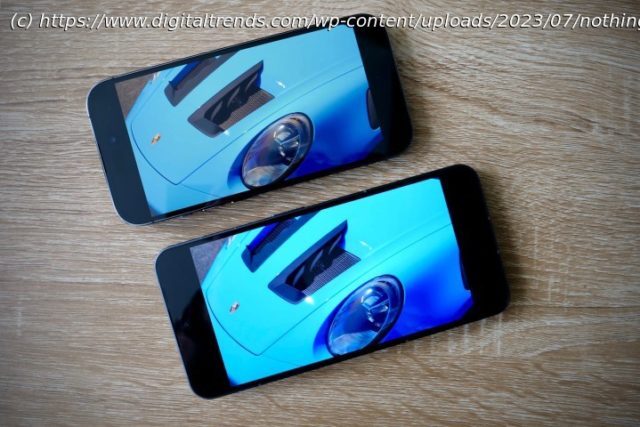Image retention or screen burn on OLED smartphone screens can diminish your experience and cause damage. Here’s how to restore your pixels to their proper hue.
If you’re seeing remnants of shadowy or ghost-like images on your smartphone or tablet, your device may have become a victim of screen burn-in. It’s a relatively rare phenomenon among modern electronic devices where either all or part of an image remains faintly, but persistently on your screen, even when it’s either off or supposed to be showing you something entirely different.
While display technology has constantly improved over the years to reduce the prevalence of screen burn-in, it’s still something that can happen from time to time, depending on how you use your smartphone or tablet. The good news is that it’s easy to prevent with some reasonable precautions.What is screen burn-in?
The term screen burn-in goes back to the cathode-ray tube (CRT) displays of yesteryear — the larger “picture tube” television and computer displays that predate modern flat screens. CRT displays used a phosphor layer on the glass that lit up when exposed to electron beams emitted by a “gun” at the back of the tube, and over time these phosphors would wear unevenly, resulting in a persistent, “burned-in” image on the front of the screen. This was especially common in the “green screen” (and amber) monochrome displays used in the early computing era.
Sadly, the move to newer technology didn’t entirely eliminate the issue of screen burn-in. Although the physics changed slightly with the move to plasma and, later, OLED technology, both of these are still susceptible to some level of burn-in. LCD panels can also experience burn-in, although that’s significantly less common, and when it does happen, it’s usually temporary image persistence that will resolve itself over time.
As the name suggests, screen burn-in only occurs when you leave a static image on your screen for an extended time. This makes it far more common on televisions, especially those that are left turned to news or sports networks that have persistent logos or graphics fixed on the screen. It’s also the reason that many newer TVs have screen savers that automatically kick in with changing or moving images. However, since most people don’t leave the same app running on their smartphone or tablet for several hours or days, screen burn-in is far less common on these devices, although it can still happen.
Some common scenarios where screen burn-in often occurs are tablets used as home hubs, in-store point-of-sale terminals, or smartphones that are frequently used on long daily commutes with apps like Waze or Google Maps. Basically, any situation where an app with static and unchanging screen elements is used for lengthy periods of time can lead to screen burn-in.Which Apple and Android devices can get screen burn-in?
As we mentioned earlier, LCD screens aren’t really subject to burn-in — at least not unless you’re really trying hard to damage your screen. This means that among smartphones and tablets, it’s only newer devices that sport OLED-based technology, including AMOLED, that can be prone to burn-in.
Apple switched the iPhone to OLED panels in 2017 with the iPhone X and continued using these in its higher-end iPhones — the iPhone XS and iPhone 11 Pro models — until 2020, when it switched almost entirely over to OLED. The only exception among modern iPhones is the iPhone SE, which still sports an LCD screen. However, the entire iPad family is virtually immune to screen burn, as nearly all iPads still use LCD panels, except for the 2021 and newer 12.9-inch iPad Pro, which use newer mini LED technology that’s still not susceptible to burn-in.
On the Android side, you’ll find many more devices that have embraced OLED, both on tablets and smartphones.






